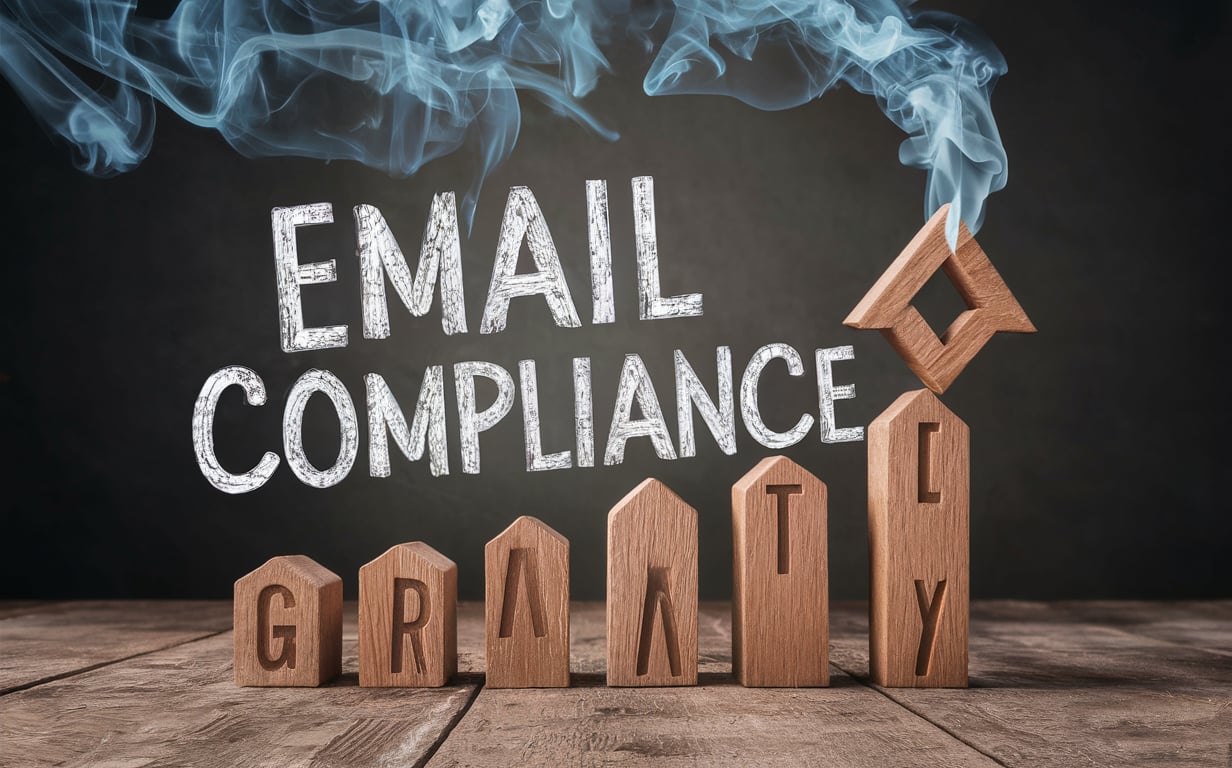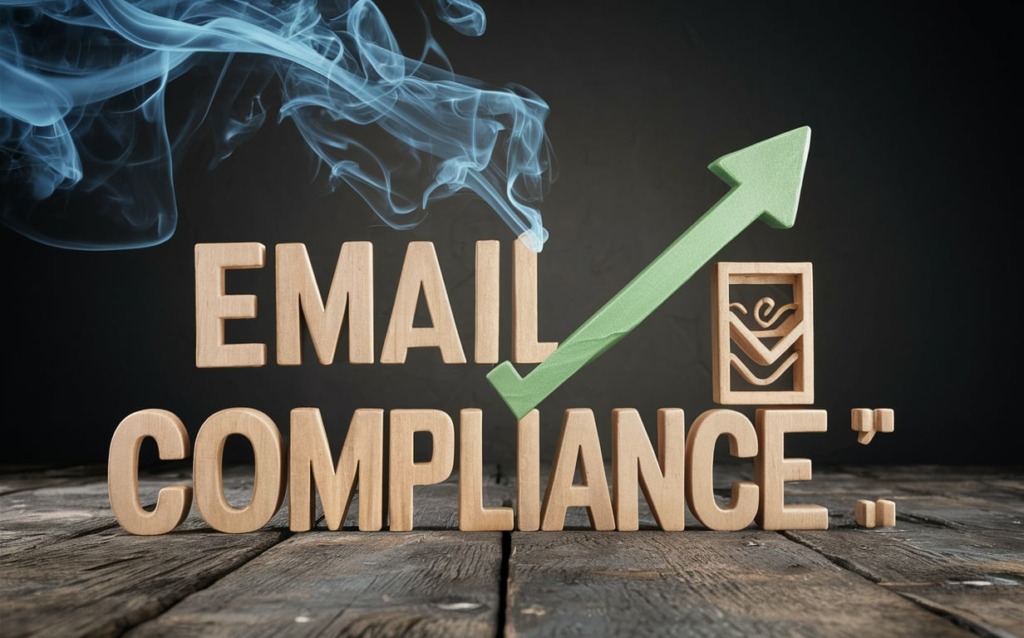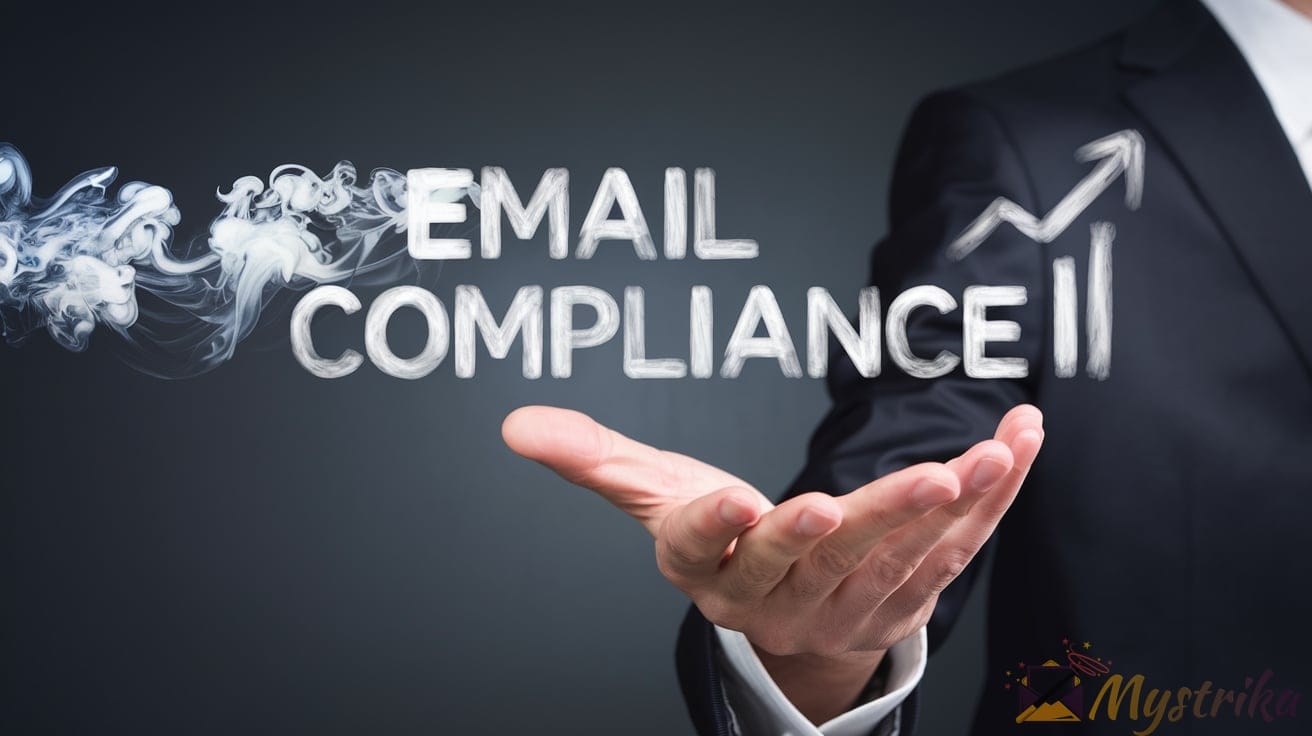Email marketing remains a top strategy for engaging audiences, but are your campaigns crossing the line? With regulations like CAN-SPAM and GDPR enacting stiff penalties, compliance should be every email marketer’s top priority. This ultimate guide unpacks the critical legal dos and don’ts you need to know before hitting send. You’ll learn how to secure proper consent, create compliant content, handle opt-outs, and integrate email with your larger data governance framework. Arm yourself with knowledge and avoid missteps that could damage your deliverability or budget. Ready to master email compliance and take your program to the next level? Let’s dive in.
Understanding Key Email Marketing Regulations
Sending marketing emails comes with legal responsibilities. Major regulations like CAN-SPAM, GDPR, CASL, and CCPA establish rules on anything from obtaining consent to crafting compliant content. Failure to comply can lead to serious fines or damage to your sender reputation.
Let’s explore some of the most important laws that shape how you can execute email campaigns.
CAN-SPAM Act: A Closer Look
The CAN-SPAM Act is a U.S. federal law passed in 2003 to regulate commercial email. It applies to any emails advertising goods or services, even if you only send one message.
Some key requirements under CAN-SPAM:
- Don’t use false headers, sender names, or deceptive subject lines. Be truthful in how you identify yourself.
- Clearly mark emails as ads or promotions. This doesn’t have to use an explicit label like “ADVERTISEMENT.”
- Include your valid physical postal address in each email message.
- Provide an opt-out method and honor unsubscribe requests within 10 business days.
- Monitor compliance from any third parties sending emails on your behalf.
Violating CAN-SPAM can lead to fines of over $43,000 per email. So it’s critical to follow guidelines like allowing opt-outs and identifying your messages as commercial in nature.
GDPR Implications for Email Marketers
The EU’s General Data Protection Regulation affects all companies interacting with EU data subjects. This includes strict standards for obtaining consent before marketing to EU contacts.
GDPR rules for email compliance include:
- Recipients must opt-in through a clear affirmative action like checking a box. Pre-checked boxes don’t count.
- Consent must relate only to emails about products/services the subscriber accepted.
- Keep detailed records of all consent as proof it was obtained properly.
- Make it just as easy to revoke consent as it was to provide it.
Fines under GDPR can reach tens of millions of dollars, so adhering to consent requirements is essential if contacting European subscribers.
CASL Rules for Canada-Based Campaigns
Canada’s Anti-Spam Legislation (CASL) regulates commercial emails sent within Canada or to Canadian recipients. Like GDPR, it mandates opt-in consent instead of opt-out.
To comply with CASL:
- Obtain express or implied consent before adding any Canadian contacts.
- Keep consent records for Canadian subscribers.
- Identify your business name and contact information in emails.
- Honor opt-out requests within 10 days.
CASL violations result in maximum penalties of $10 million per infraction. So securing proper consent from the start is key when marketing to Canadians.
Staying CCPA Compliant in California
The California Consumer Privacy Act (CCPA) affects companies doing business in California. It gives residents rights like:
- Accessing what personal data a business has collected.
- Opting out of data sales to third parties.
- Deleting certain personal information upon request.
CCPA isn’t solely an email regulation. But it does require reasonable data security procedures. So when collecting customer data for email, ensure proper encryption, access controls, and similar protections.
Fines for violations range from $2500 per incident up to $7500 for intentional infractions.

Securing Valid Consent in Your Outreach
Before adding any new contacts to your mailing list, it’s essential to obtain their valid consent. Depending on regulations like GDPR and CASL, you may need opt-in consent versus opt-out. This section covers best practices for getting proper permission according to email laws.
Defining Opt-In vs. Opt-Out Approaches
There are two main methods for getting subscriber consent:
Opt-In: Recipients take a clear affirmative action to actively sign up for emails, like checking a box or submitting a web form. This is required under laws like GDPR and CASL.
Opt-Out: You can add people to your list by default, requiring them to take action later if they want to unsubscribe. CAN-SPAM in the U.S. allows opt-out.
Opt-in is more respected since people explicitly choose to receive your emails. But opt-out can work well when contacts already have a relationship with your brand.
Setting Up GDPR-Friendly Signup Forms
To obtain valid opt-in consent under GDPR:
- Don’t pre-check any boxes. Recipients should perform an action like ticking the box themselves.
- Be specific about the types of emails they are consenting to receive. Avoid vague or blanket terms.
- Make it easy to view/access your privacy policy from the same page.
- Record consent details like email address, date, and method of opting in.
- Send confirmation emails to verify the address and complete opt-in.
Managing Repermissioning for Existing Contacts
If you have subscribers without clear consent records, conduct a repermission campaign:
- Email each contact asking them to re-opt-in to receive communications.
- Clearly explain the types of messages they can expect from you.
- Make it easy to opt out if they don’t want future emails.
- Remove anyone from your list who doesn’t re-opt-in to preserve compliance.
Recording and Storing Proof of Permission
Keep organized records of all consent as proof it was obtained properly:
- Log email addresses that opted in or out and the associated dates.
- Note the source of each opt-in like a website form or email campaign.
- Save confirmation emails or screenshots showing they completed sign-up.
- Store records in an easy-to-access way like spreadsheets or your CRM system.
Documenting consent protects you in case of an audit or investigation into your practices.

Crafting Compliant Email Content
The content within your marketing emails must uphold standards from regulations like CAN-SPAM. Let’s explore tips for honest messaging, proper sender details, matched subject lines, and identifying commercial content.
Avoiding Deceptive or Misleading Language
Regulations prohibit dishonest language designed to trick recipients. Some guidelines:
- The sender name, email address, and domain should accurately identify your business. Don’t disguise the source.
- Subject lines must match the contents. Don’t exaggerate offers or use “clickbait” just to get opens.
- Calls to action should enable readers to make informed decisions. Never pressure or mislead.
- Provide real contact details allowing recipients to follow up with questions.
- If you made an error that upset subscribers, own up to it in a sincere apology.
Honest language builds trust. Readers feel comfortable opening and engaging with emails from senders who respect their time.
Properly Identifying Commercial Emails
Regulations require clearly identifying promotional or transactional messages:
- Include a label like “ADVERTISEMENT” or “PROMOTION” at the beginning of commercial emails.
- But no need for excessive labeling if the content already makes it obvious it’s an ad.
- For transactional emails, use subject lines explaining the exact purpose like “Your Order Confirmation.
- Begin relationship emails with clear explanations like “You’re receiving this as a valued [BRAND] subscriber.”
Listing Accurate Sender Details in Each Message
Another standard requirement is including your contact information:
- Feature your company name so readers immediately know who the email is from.
- List a valid physical mailing address for your business.
- Provide customer service contact details like phone, email, or live chat.
- Ensure all details are current. Outdated addresses undermine trustworthiness.
Equip subscribers to reach out with questions or concerns. Accurate sender information conveys legitimacy.
Writing Subject Lines That Match Email Contents
As highlighted earlier, subject lines must align with content:
- Use descriptive phrases summarizing the topic like “March Newsletter” or “Get 40% Off Our Best Sellers.”
- For relationship emails, include context like “Your Amazon Order Shipped.”
- Avoid misleading claims or urgent demands solely to drive opens.
- Subject lines can be enticing but should set proper expectations.
Holding relevance between headlines and content shows respect for subscribers’ time.

Implementing Email Best Practices
Beyond strict legal compliance, certain best practices can improve your subscriber relationships and email performance. Let’s look at testing messages, tracking analytics, and determining optimal send frequency.
Testing Messages Before Sending
Thoroughly test your emails before sending to avoid issues like broken links or rendering problems:
- Review messages across multiple devices like mobile, desktop, and tablets. Formatting can vary.
- Click every link and button to ensure proper functionality.
- Check images to confirm they loaded correctly and are well-sized.
- Review your unsubscribe process to make opt-outs smooth.
- Send test emails to yourself or a small group first before full deployment.
Finding any errors or glitches beforehand prevents frustrating subscribers later.
Tracking Performance to Refine Campaigns
Monitor key metrics to see what resonates with your audience:
- Review open and click-through rates to judge whether subject lines and content work.
- Check unsubscribe numbers across segments to identify any disengaged groups you message too frequently.
- Analyze conversions to see which emails attract the most sales.
- Use A/B testing to experiment with factors like send times, subject lines, or designs.
Use insights to continually adjust your approach. Optimization leads to higher engagement and revenue.
Finding the Right Email Sending Frequency
There’s no single perfect cadence for all audiences. Tailor based on:
- Industry norms and subscriber expectations. Sending daily or weekly may be excessive for some groups.
- Segment preferences. Power users and loyal customers often appreciate more frequent updates.
- Engagement data. Notice whether certain groups consistently ignore your emails or churn from lists.
- Email purpose. Promotions can be sent more sparingly compared to relationship-building content.
Stick to a consistent schedule instead of random blasts. Give subscribers control by allowing frequency preferences too.
Consequences of Non-Compliance
Failing to follow email regulations carries severe financial and reputational consequences. Understanding potential penalties helps motivate building a compliant program.
CAN-SPAM Violations and Penalties
The CAN-SPAM Act allows hefty fines of up to $43,792 per violation. Additional infractions include:
- Using deceptive headers, sender names, or subject lines.
- Failure to identify the message as an ad or include sender physical address.
- Not honoring opt-out requests promptly.
- Selling email addresses of users who opted out.
- Outsourcing to partners who violate CAN-SPAM.
With fines calculated per email, costs can spiral into millions across large lists. Beyond fines, CAN-SPAM violations undermine deliverability when ISPs flag messages as suspicious.
GDPR Breach Fines and Repercussions
Mishandling EU citizen data under GDPR brings steep fines like:
- Up to €20 million or 4% of global annual revenue for major violations.
- €10 million or 2% of global revenue for less severe violations.
GDPR also allows individuals to sue for compensation over data violations. Class action lawsuits could demand sizeable amounts.
There are further repercussions like reputational damage, lost European customers, and bans from operating in the EU. So compliance is critical for companies working with European data.
Multiple Regulations Stack Penalties
With overlapping regulations, a single compliance mistake can violate multiple laws.
For example, say you email Canadian and EU contacts without proper opt-in consent. This could infringe both GDPR and CASL simultaneously.
Fines would add up quickly:
- Up to $10 million per violation under CASL.
- 4% of global revenue under GDPR.
- Legal fees to defend class action lawsuits.
- Lost business from damaged reputation.
The combined penalties demonstrate why you must comply with all relevant regulations for your subscribers.

Following Email Laws as Part of Overall Compliance
Email doesn’t exist in isolation. To build an effective program, integrate email compliance into your larger governance frameworks.
Integrating Email with Data Privacy Frameworks
Email regulations like CAN-SPAM and GDPR relate closely to broader data privacy laws. Take a unified approach:
- Map out all compliance obligations relevant to your business across industries and locations.
- Draft an umbrella data governance plan addressing common principles like consent, data minimization, and access rights.
- Incorporate email-specific policies as a module within the larger framework.
- Centralize tools for managing preferences and proof of consent across channels.
- Build compliance checklists that reference email and other data flows.
This integrated view makes compliance efficient across your martech stack.
Documenting Compliance Across Channels
Track compliance tasks in one master record referencing email and beyond:
- List required steps to secure consent, honor opt-outs, and follow regulations for email campaigns.
- Log how you handle consent and privacy for website visitors, social followers, mobile push notifications, and other channels.
- Outline how you protect data through encryption, access controls, employee training, and similar methods.
- Note any high-risk data flows that need extra security like large file transfers.
- Keep an inventory of compliance artifacts like your privacy policy, DPA, and data mapping.
Making Compliance Part of Company Culture
Move from a checkbox mindset to truly valuing privacy:
- Provide ongoing education explaining why compliance matters, not just the rules.
- Welcome feedback and ideas from employees at all levels.
- Brainstorm innovative ways to give users more transparency and control.
- Publicly commit to core principles rather than aiming to narrowly avoid penalties.
- Make respect for subscriber preferences a key performance indicator.
This cultural shift ensures the entire organization owns compliance.

Key Takeaways for Mastering Email Compliance
Email marketing remains a highly effective strategy, but you must approach it thoughtfully to comply with regulations. Some core lessons:
- Understand the specific laws like CAN-SPAM, CASL, GDPR, and CCPA that apply to your subscribers based on their location. These rules dictate proper consent, opt-outs, sender identity, and more.
- Obtain clear opt-in consent where required. Manage repermissioning for existing contacts without proper consent records. Follow best practices like double opt-in for all sign-ups.
- Craft compliant content free from deception. Properly identify commercial emails, never mislead with subject lines, and include accurate sender details.
- Make unsubscribing accessible and honor requests promptly. Regularly scrub your lists against opt-out logs.
- Look beyond email in isolation. Integrate your compliance practices into larger data privacy frameworks.
- Remember that non-compliance risks severe financial penalties in addition to damaged sender reputation and lower deliverability.
- Don’t view compliance as a burden. See it as an opportunity to build trust and align your email program with your brand values around transparency.
There’s no need to let constantly evolving regulations intimidate you. With the right foundation of respect for your subscribers’ inboxes, it’s straightforward to execute effective email campaigns that also uphold important privacy protections.
Frequently Asked Questions About Email Compliance
Let’s review some common email compliance questions:
What are the main email marketing regulations I need to know?
The key regulations include the CAN-SPAM Act for commercial email in the US, CASL for Canada, GDPR for the EU, and state laws like CCPA in California. Depending on your subscribers, other rules may apply as well.
What exactly constitutes valid permission or consent?
GDPR and CASL require explicit opt-in consent, such as checking a box to agree to emails. CAN-SPAM allows opt-out consent, where people can be added to your list as long as they can unsubscribe later. Always get as clear and specific consent as possible.
How should I document consent for compliance?
Keep detailed records of all consent including email addresses, consent date, source of opt-in, and confirmation logs. This provides proof of valid permissions if ever required. Update logs when users opt out as well.
How soon must I honor opt-out requests?
CAN-SPAM sets a deadline of 10 business days maximum to process unsubscribe requests. GDPR states users can opt out at any time and their data be deleted. Always aim to honor opt-out requests as quickly as possible.
Can I buy or rent email lists to build my subscriber base?
Avoid purchasing or renting email lists, as these likely contain subscribers who never consented to your emails. Abusing purchased lists violates laws like CASL. Focus on organic list growth from clearly interested parties.
What return email address should I use?
The return address should accurately identify your business. Using fake or misleading sender details means emails may go to spam or violate regulations. Ensure the domain matches your brand too.
How often can I send marketing emails?
There are no universal limits, but find a frequency that provides value without overwhelming recipients. Monitor engagement metrics, industry norms, and user feedback to optimize your cadence. Allow subscribers to customize frequency.
What are the penalties for not complying?
Fines can add up quickly, with GDPR violations reaching tens of millions of dollars and CAN-SPAM at over $43,000 per email. There may also be lawsuits, lost business, damaged deliverability and sender reputation.
Should I mention compliance in my emails?
No need to explicitly reference regulations in emails. Just ensure you comply behind the scenes. Focus on delivering value to subscribers — compliance is the foundation that enables you to market responsibly.

